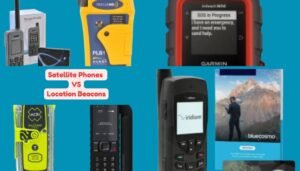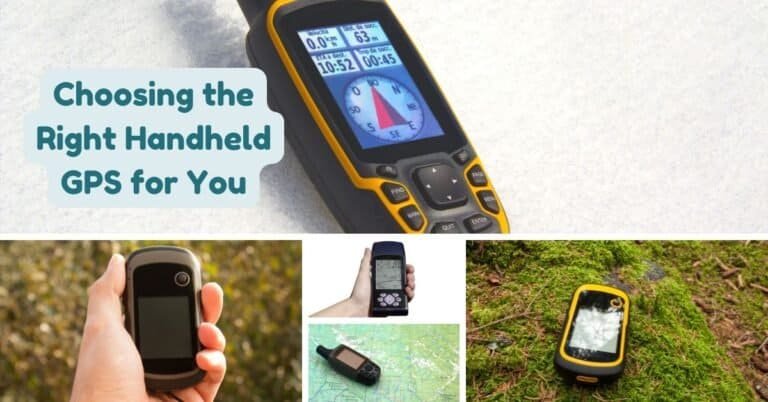Why Choosing the Right Device Matters
When you’re miles off the grid and things go sideways, communication can mean the difference between life and death. Did you know that nearly 2,000 search and rescue operations are launched each year in North America alone, many due to hikers and adventurers having no reliable way to call for help?
That stat alone gives me chills. As someone who thrives on backcountry exploration, I’ve had to make the tough decision: Should I carry a satellite phone or rely on an emergency beacon? Both can be literal lifesavers, but each comes with its own advantages, limitations, and ideal use cases.
In this guide: Satellite Phones vs Emergency Beacons. I’ll break down both technologies, from pricing to functionality, so you can make the right call before heading out. Whether you’re a solo backpacker, weekend warrior, or expedition leader, knowing which device to carry could save your life or someone else’s.
What Are Satellite Phones?
I’ll never forget the first time I saw a satellite phone in action. I was on a backcountry trip with a friend who worked in forestry, and he casually pulled out what looked like a bulky walkie-talkie. I laughed at the size of it, but when he dialed and actually got a clear connection in the middle of nowhere, I realized how different this tech was from a regular cell phone.
How satellite phones work: using orbiting satellites to make voice calls
Instead of cell towers, sat phones connect directly to satellites orbiting the Earth. That means when you speak into one, your voice bounces up into space before it makes its way to the other person. It’s wild to think about, but it also explains the slight delay you sometimes notice in conversations. I once had to pause mid-sentence because my words came back to me half a second later; it felt like talking to someone over a really old-school radio.
Coverage area: global, polar, or region-specific, depending on the network
Not all satellite phone coverage is equal. Iridium, for example, offers true global coverage, even at the poles. Globalstar, on the other hand, is more region-specific, and I found out the hard way when I tried one in northern Canada and got spotty reception. It’s one of those lessons you only need to learn once: always check the coverage map of the network before relying on it for a trip.
Key features: two-way voice communication, SMS, GPS tracking, SOS functions
These phones aren’t just for calls. Most modern sat phones have GPS built-in, some let you text (though at a painfully slow pace), and many include an SOS button. I once played around with an Inmarsat model that allowed me to send my coordinates every 15 minutes to reassure my family I was fine. The SOS function, in particular, is no joke; it connects straight to emergency services, and I was told by a search-and-rescue guy that those buttons have saved countless lives.
Leading brands: Iridium, Inmarsat, Globalstar
The big three are Iridium, Inmarsat, and Globalstar. Iridium is the go-to for explorers and anyone needing coverage literally everywhere. Inmarsat is a favorite for maritime use since its coverage is rock solid on the oceans. Globalstar tends to be cheaper but works best if you stay within North America and Europe. I tried borrowing a Globalstar once for a desert trip, and it did okay, but I had to hold the antenna just right, like one of those old rabbit-ear TVs.
Use cases: remote work, long expeditions, emergency contact in real-time
I’ve met oil rig workers who use sat phones daily, mountaineers who carry them as backup, and even a sailor who swore by his Inmarsat while crossing the Atlantic. For me, it’s mostly been peace of mind on long treks. There’s something comforting about knowing you can reach help instantly if your car breaks down on a logging road or if a storm hits when you’re days from civilization. It’s not about chatting; it’s about survival and reliability.
What Are Emergency Beacons?
I first got interested in emergency beacons after a buddy of mine broke his ankle during a hike in a remote canyon. We were hours from cell service, and while I had a satellite phone, he had a Personal Locator Beacon (PLB). He pressed one button, and within minutes, a distress signal was on its way to a rescue coordination center. That moment sold me on the idea that these little gadgets, while simple, are absolute lifesavers.
Definition and types: PLBs (Personal Locator Beacons) and EPIRBs
There are two main types of emergency beacons: PLBs and EPIRBs. PLBs are designed for individuals, hikers, climbers, backcountry skiers, basically anyone who might end up in a bad spot far from help. EPIRBs (Emergency Position Indicating Radio Beacons) are built for vessels, like sailboats or fishing boats. I remember a sailing trip where the captain gave a quick “abandon ship” rundown, and the first thing he pointed to was the mounted EPIRB. It was clear that thing wasn’t just a gadget, it was the last line of defense.
How they work: distress signal sent to satellites using 406 MHz frequency
Emergency beacons operate on the 406 MHz frequency, which is monitored worldwide by the Cospas-Sarsat satellite system. Basically, when you hit that SOS button, your beacon pings satellites, which then alert local rescue authorities. The first time I learned about this, I was floored by how direct the system is, no subscription, no middleman, just an SOS bouncing from your beacon to space to rescuers. Of course, weather and terrain can cause minor delays, but it’s still one of the most reliable systems out there.
Unlike satellite phones, there’s no fumbling with numbers or menus. It’s literally one button: press, and help is on the way. Most modern beacons also include GPS coordinates, so rescuers know exactly where you are, down to about 100 meters in accuracy. The kicker? There are no subscription fees. I can’t tell you how refreshing that felt after paying hefty sat phone bills. Once you buy and register a beacon, you’re set.
Examples: ACR ResQLink, Ocean Signal rescueME, Spot Gen4
Over the years, I’ve seen a few models in action. The ACR ResQLink is a hiker’s favorite, compact and built like a tank. The Ocean Signal rescueME EPIRB is a standard for sailors; I saw one mounted on nearly every vessel during a marina walk in Florida. The Spot Gen4 is a bit different since it uses a commercial satellite network and allows tracking, but it’s handy for those who like breadcrumb trails of their adventures. I tested one on a week-long canoe trip, and my family loved watching the little dots pop up on the map.
Limitations: one-way communication, no voice/text, only for emergency use
Here’s the big drawback: emergency beacons are one-way devices. You send a distress signal, but you don’t get confirmation or updates back. That uncertainty can feel brutal, especially in a stressful situation. Also, they’re strictly for emergencies. You can’t call home to say you’ll be late or text your buddy about a change in plans. I once joked about pressing the beacon just to let my family know I was out of water, but yeah, that would not go over well with rescue teams.
Key Differences Between Satellite Phones and Emergency Beacons
The first time I carried both a satellite phone and a PLB on the same trip, I realized they really aren’t competing tools; they’re built for different jobs. I was hiking in a remote section of the Rockies, and while the sat phone let me check in with family each night, the PLB was tucked in my pack as the “break glass in case of emergency” option. That experience showed me how the differences play out in real life.
Communication type: two-way (sat phone) vs. one-way (beacon)
This is probably the biggest difference. Satellite phones give you two-way communication; you can talk, text, or even send GPS updates. Emergency beacons, on the other hand, only send a one-way distress signal. When I used a sat phone to call my wife from a mountain pass, I could hear her voice, which was reassuring. But with my PLB, I had to accept that once I pressed that SOS button, I’d be in the dark until rescuers arrived.
Activation purpose: regular use vs. emergencies only
A satellite phone can be used like a normal phone, just pricier and bulkier. I once used mine to coordinate with a supply drop during a backcountry canoe trip; it was practical, not an emergency. Emergency beacons are different: you never touch them unless something has gone really, really wrong. I keep mine sealed in a dry bag so I don’t even get tempted to fiddle with it, because the activation is meant for life-or-death situations only.
Signal reliability: weather, tree cover, and satellite position considerations
Both devices can struggle under heavy tree cover, deep canyons, or stormy skies. I remember trying to get a sat phone call through during a thunderstorm, and it took a couple of tries before the signal locked on. With my PLB, rescuers told me later that heavy canopy could have delayed my GPS signal by a few minutes, but the distress alert would still have gone through. Basically, neither is perfect, but both are surprisingly resilient given the conditions they’re used in.
Size and weight comparisons
Satellite phones are bigger and heavier; mine is about the size of an old cordless phone with a chunky antenna. I carry it on a belt holster sometimes, and it’s not exactly subtle. My PLB, on the other hand, is palm-sized and fits easily in a jacket pocket. On ultralight trips, I’ll sometimes skip the sat phone and just bring the beacon because the weight savings feel worth it.
Subscription/service plan requirements
This one hits your wallet. Satellite phones almost always need a service plan, and the minutes aren’t cheap; I’ve seen rates as high as $1.50 per minute. I once accidentally left a sat phone connected longer than I thought, and the bill stung. Emergency beacons, by contrast, don’t need a subscription once you’ve registered them. That’s a huge relief if you’re budget-conscious but still want a reliable way to call for help in a true emergency.
Cost Comparison and Long-Term Value
I used to think buying a satellite phone was just a one-and-done expense. Big mistake. After a couple of trips, I realized the true cost is in the long game, subscriptions, batteries, and the occasional repair. On the flip side, my PLB has been one of the most cost-effective pieces of safety gear I’ve ever owned. Let’s break it down.
Upfront device cost comparison: beacon vs. phone
Emergency beacons are way cheaper upfront. My ACR ResQLink PLB cost me about $300, and that’s it. I registered it, and it’s good to go. The satellite phone, on the other hand, was closer to $1,000 even secondhand. Some newer models can run $1,200–$1,500, depending on features. So right out of the gate, you’re looking at a big price gap.
Monthly subscription or activation fees (if any)
This is where the sat phone really starts to bite. Most providers require a monthly subscription, and plans usually start around $50 and go up from there. Minutes aren’t unlimited either, so if you go over, expect a bill that makes you wince. I remember paying nearly $200 one month after a week-long trip, during which I made multiple check-in calls. Emergency beacons don’t require subscriptions, which feels like a breath of fresh air. You buy it, register it, and you’re done.
Battery life and maintenance
PLBs are built to sit quietly until they’re needed. The battery life is measured in years, not hours, and most have a shelf life of 5–7 years before needing a battery replacement. My sat phone, by contrast, can barely last 30 hours on standby, and that’s if I keep it powered down between calls. I learned quickly to carry a solar charger when I bring the phone, because otherwise it’s useless by day three of a trip.
Replacement costs and lifespan
With a beacon, the main cost over time is the battery replacement, which can run $150–$200, depending on the model. Phones, though, are more fragile. I dropped mine on a rocky shoreline once, and the antenna snapped; it cost me nearly $300 to repair. Plus, sat phone tech evolves faster, so you might find yourself upgrading every 5–7 years, whereas a beacon can last a decade or more with proper maintenance.
Total cost of ownership over 5 years
If I add it all up, the difference is huge. A PLB might cost $300 upfront, plus one battery replacement over 5 years, so maybe $500 total. A sat phone could easily run $1,200 for the device plus $600 a year in subscription fees; that’s $4,200 before you even add in repairs or accessories. For me, the beacon is the better long-term value if my only concern is safety. However, if you require two-way communication for work or longer expeditions, the phone’s ongoing costs become a necessary expense.
Which Device Is Better for Different Types of Travelers?
I’ve learned over the years that there’s no one-size-fits-all answer here. The right device really depends on where you’re going, who you’re with, and what kind of risks you’re likely to face. I’ve carried both at different times, and each had its moment to shine.
Hikers, climbers, and backcountry skiers
For solo hikers and climbers, a PLB is the obvious choice. It’s light, rugged, and doesn’t require much thought; just clip it to your pack and forget it until things go south. I once carried only a sat phone on a long backcountry ski trip, and honestly, the extra weight and constant worry about battery life drove me nuts. If you’re in the mountains, where grams matter, a beacon is the smarter move.

Boaters and ocean adventurers
Out on the water, the story changes. EPIRBs are required on many vessels for a reason; they’re built for maritime rescues and float automatically when deployed. I crewed on a friend’s sailboat once, and he had both an EPIRB and an Inmarsat phone. The EPIRB was the “mayday” option, while the phone was used for weather updates and checking in with family onshore. For boaters, having both really is the gold standard.
International travelers and remote workers
When I was traveling through South America, a sat phone saved me more than once. I used it to coordinate with drivers in remote areas where cell service was nonexistent. For anyone working off-grid, think journalists, engineers, or researchers, two-way communication is essential, so the satellite phone wins hands down. A PLB would’ve been useless for the day-to-day logistics I needed.
Group expeditions vs. solo travel
In a group setting, it often makes sense to split the load. On a guided trek I joined, the leader carried a sat phone while one of us carried a beacon. That way, we had both emergency signaling and reliable communication covered. For solo travel, though, I lean toward a beacon. There’s something reassuring about knowing it’s fail-safe, even if you twist an ankle miles from help.
Family and off-grid communication needs
When I started taking my kids camping in remote areas, my priorities changed. Suddenly, it wasn’t just about emergency rescue, it was about keeping my spouse updated and easing her worry. In that case, the sat phone was the better fit. Being able to call home each night made a huge difference. But if I were out alone, I’d probably leave the phone behind and just bring the PLB for safety.
When You Might Need Both
I used to think carrying both a satellite phone and a beacon was overkill. Why lug two devices when one will “do the job”? But the more time I’ve spent in remote places, the more I’ve seen how they actually complement each other. There are situations where redundancy isn’t just nice; it could be the difference between a safe trip and a disaster.
Situations where redundancy improves safety
On a weeklong canoe trip in the Yukon, I carried both. The sat phone was my lifeline for daily check-ins and weather reports, but I kept the PLB sealed in a waterproof bag. I figured if the phone fell overboard or the battery died, I’d still have a no-fail option. That redundancy was worth its weight in gold when a sudden storm capsized one of our canoes. We didn’t need the beacon, thankfully, but just knowing it was there eased a lot of stress.
How satellite phones and PLBs can complement each other
The best way to think of it is that sat phones are for communication, while PLBs are for emergencies. When my climbing group tackled a remote peak, we used the sat phone to update our base camp on our progress each evening. If something had gone really wrong, the PLB would have been the button to press. Having both meant we could handle logistics and still have a backup plan if things went sideways.
Combining tech for group trips or guided expeditions
On guided trips, it’s common practice to carry both. I once joined a mountaineering course where the lead guide had a sat phone strapped to his pack and a PLB stashed inside. The phone let him keep in touch with other guides and coordinate schedules, while the beacon was strictly a last-resort tool. On group expeditions, redundancy isn’t wasted weight; it’s shared responsibility. If one device fails, there’s another ready to go.
Real-life case studies of dual-device use
I heard about a kayaking team that got caught in rough seas off Alaska. They used their sat phone to call the Coast Guard and explain the situation in detail, which sped up the rescue. But when the phone battery died halfway through, they activated the EPIRB to broadcast their exact location. That combo, voice communication followed by a pinpoint signal, meant rescuers knew what to expect and exactly where to go. It’s a textbook case of how the two devices can work together seamlessly.
Factors to Consider Before Buying
When I bought my first satellite phone, I rushed the decision. I thought, “If it works everywhere, I’m covered.” But after a few trips and a painful bill, I realized there’s more to it than just buying the device. Choosing between a sat phone and a beacon (or both) really depends on your situation, and the details matter more than most people think.
Destination and expected terrain
Your destination is the biggest factor. If you’re headed into open ocean or the polar regions, global coverage from an Iridium phone or an EPIRB is essential. But if you’re just hiking deep forest trails, a PLB will do the job without extra weight or cost. I once dragged a sat phone into a canyon, only to find the steep walls blocked the signal. That was my wake-up call that terrain can make or break your device choice.
Length of trip and power needs
Battery life is another make-or-break detail. A beacon can sit idle for years and still work when needed. A sat phone? You’re lucky if it lasts 30 hours on standby. On my weeklong canoe trip, I had to carry a solar charger just to keep the phone alive. If you’re out for days or weeks, you’ll need a power strategy, or stick with a beacon that doesn’t need constant charging.
Communication needs: emergency-only or regular updates
Ask yourself: do you just need a panic button, or do you want to talk to someone daily? For me, family trips demand two-way communication, so the sat phone wins. But when I’m solo backpacking, I lean toward the PLB; it’s simpler and designed for the worst-case scenario only. The choice often comes down to peace of mind versus practicality.
Budget constraints and subscription options
The money side can’t be ignored. Beacons are cheaper upfront and don’t need a subscription. Sat phones, meanwhile, hit you twice: first at purchase and then with ongoing plan fees. I once spent nearly $700 in a single year on service fees for my phone, which stung when I only used it for a few calls. If your budget’s tight, a beacon gives you safety without draining your wallet.
Government regulations and country-specific laws
One thing many people overlook is legality. Some countries restrict or even ban satellite phones. I had a scare at customs once when a border officer eyed my sat phone suspiciously. It turns out that, in certain regions, you need a permit. PLBs and EPIRBs are usually fine, but always check the laws before you fly. The last thing you want is to have your gear confiscated or face fines.
Recommended Satellite Phones and Emergency Beacons
Here are some recommendations & comparisons for satellite phones, emergency beacons, combo devices, where to buy or rent them, and accessories. I’ve pulled from what I’ve used (or nearly used) + what gear testers seem to like. This should help you decide what fits you best.
Top-rated Satellite Phones
Here are some of the best satellite phones out there:
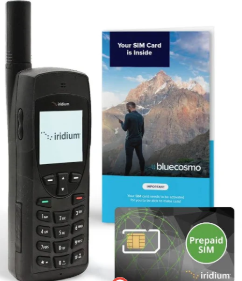
Iridium 9555 Satellite Phone
Iridium 9555 Satellite Phone — A rugged classic. Global coverage including poles; sturdy casing; reliable SOS in SOS-button models; known for durability. A bit bulky, but great if you want a proven workhorse.
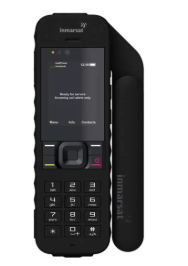
Inmarsat IsatPhone 2
Inmarsat IsatPhone 2 Handheld Satellite Phone — More geared toward maritime or moderate remote land use. I’ve used this when sailing, and the call quality over water is decent. Battery life is reasonable.
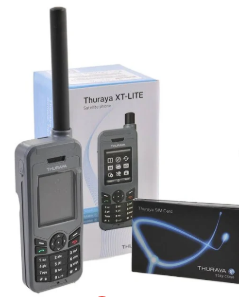
Thuraya XT‑LITE
Thuraya XT‑LITE Satellite Phone — A lighter, less expensive option if you don’t need full global polar coverage. It’s good in many remote areas (outside dense canopy or deep valleys). Better suited for lighter users or backup.
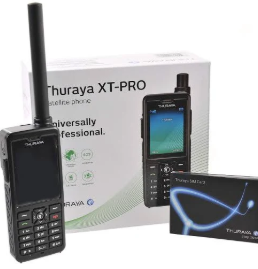
Thuraya XT Pro Satellite Phone
Thuraya XT Pro Satellite Phone & NOVA SIM — More premium, better features (antenna, extras). If you’re expecting to use voice/text frequently, or want stronger hardware, this is a strong choice.
Also, one of my go-to phones is the Iridium Extreme (9575). It has tough durability (MIL-STD 810F), IP65 weather resistance, talk time ~4 hours, standby around 30 hours.
Most Reliable Emergency Beacons
If you’re more focused on SOS / rescue orientation, these beacons are highly rated.
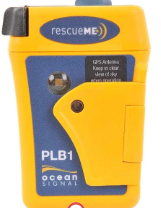
Ocean Signal rescueME PLB1
Ocean Signal rescueME PLB1 — Very compact (~116g), no subscription, decent battery life. I carried it once on a winter solo ski trip. Loved that I didn’t have to worry about charging daily.
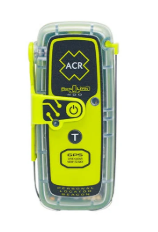
ACR ResQLink 400 Personal Locator Beacon
ACR ResQLink 400 Personal Locator Beacon — Rugged, strong reputation. Good for boaters or people where you need something marine-rated. Reliable distress alerts.
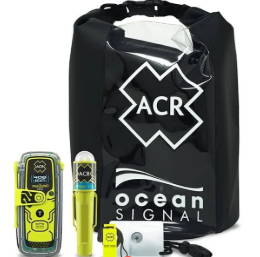
ACR ResQLink View GPS Personal Locator Beacon
ACR ResQLink View GPS Personal Locator Beacon — Adds a digital display (“View”) so you can see that it’s transmitting / get GPS coordinate feedback (some include Return Link Service, which confirms the distress was received). I once used the View version just to test with a friend—seeing that confirmation is a big psychological relief.
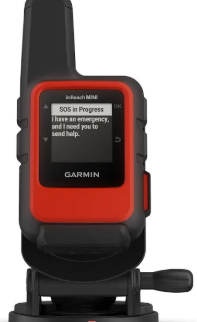
Garmin inReach Mini 2
Garmin inReach Mini 2 — This is more of a hybrid (messenger + location). It lets you send/receive text messages via satellite, plus SOS. Not purely a beacon, but extremely useful if you want both emergency safety and some regular communication.
Other models worth strong mention: PLB3 by Ocean Signal (adds AIS + 406 MHz) is getting good reviews.
Best Combo Devices with Both Messaging and SOS
These are devices that blend messenger / GPS / SOS — not quite a full sat phone, but more than a basic beacon:
- Garmin inReach Mini (or Mini 2) — good for hikers/backpackers who want to check in, share location, plus an SOS. Because you can send short messages, track, etc.
- SPOT X / SPOT Gen4 — notable in this category (2-way messaging, plus SOS). If you don’t need full voice calls, these can be lighter, cheaper alternatives to a sat phone.
- ZOLEO Satellite Communicator — another device I’ve seen folks use; it offers messaging with relay, GPS tracking, and SOS. Good battery and lower cost of ongoing service compared to some sat phones.
Accessories to Consider (Cases, Solar Chargers, Antennas, etc.)
From my experiences, these accessories often make or break usefulness in the field.
| Accessory | Why It’s Important / What to Look For |
|---|---|
| Rugged / waterproof case / holster | Keeps device safe from rain, drops, dust. The extreme models still need protection especially during transport. |
| Solar charger or portable power bank | Especially for sat phones when you’re out for days. I once had only one day of solar and half my trip using the phone was useless. |
| Spare battery (if replaceable) | Some phones allow swapping battery; knowing you have a backup is reassuring. |
| Extra antenna (if supported) | Helps under tree cover, in valleys, etc. Some sat phones or messengers allow external antennas. |
| Lanyards or tether for beacons | You want the beacon to stay with you if you fall or in a storm. A tethered beacon is way safer than one bouncing around your pack. |
| Protective caps on SOS buttons / covers for exposed parts | Sometimes SOS buttons are accidentally pressed; covers help prevent false alarms (or wasted battery). |
My Recommendations Given What I’ve Learned
Putting it all together from what I’ve used and seen:
- If you’re doing serious remote work / long, multi-week expeditions: get a rugged sat phone (e.g. Iridium 9575 / Extreme) + a reliable beacon like ResQLink View or rescueME PLB1 as backup.
- If you’re doing occasional adventures (backpacking, ski touring) and want to travel light: consider a messenger + SOS combo like Garmin inReach Mini 2, or Spot X.
- If budget is tight but safety is non-negotiable: a solid PLB is one of the best safety investments you can make.
- Always budget some extra for accessories (battery / power / case) because without them, even the best device can fail you when you need it most.
Making the Right Choice Before Heading Out
When it comes to wilderness survival and backcountry peace of mind, having the right emergency communication device is non-negotiable. Satellite phones offer constant contact and real-time updates, while emergency beacons provide a last-resort lifeline that never fails when it counts.
Ultimately, the best device for your adventure depends on where you’re going, how long you’ll be out, and how connected you want to be. Some travelers may feel secure with just a beacon, while others prefer the versatility of a satellite phone, or better yet, both.
Don’t leave your safety to chance. Evaluate your risk, choose wisely, and make sure your gear includes a lifeline that’s ready when you need it most.
FAQ Section
Can a satellite phone replace an emergency beacon?
Not entirely. While a satellite phone offers two-way communication and allows you to call for help, emergency beacons are more reliable for instant distress signals, especially in life-threatening situations. Ideally, they complement each other.
Do emergency beacons require a subscription?
Most personal locator beacons (PLBs) do not require a subscription. However, some satellite messengers like the Garmin inReach or SPOT devices do, depending on their communication features.
What is the battery life of emergency beacons vs. satellite phones?
Emergency beacons typically have a battery life of 5–7 years in standby mode and 24+ hours once activated. Satellite phones have rechargeable batteries that last between 4–30 hours, depending on usage and model.
Are satellite phones legal everywhere?
No. Some countries, such as India, China, and Cuba, restrict or prohibit the use of satellite phones. Always check local laws before traveling with one.
What’s better for solo travelers: satellite phone or emergency beacon?
For solo travelers, an emergency beacon offers the most reliable, no-fuss SOS function. However, a satellite phone provides two-way communication, allowing you to give rescuers critical details. Many solo adventurers choose to carry both for maximum safety.
Disclaimer: This blog post contains affiliate links

